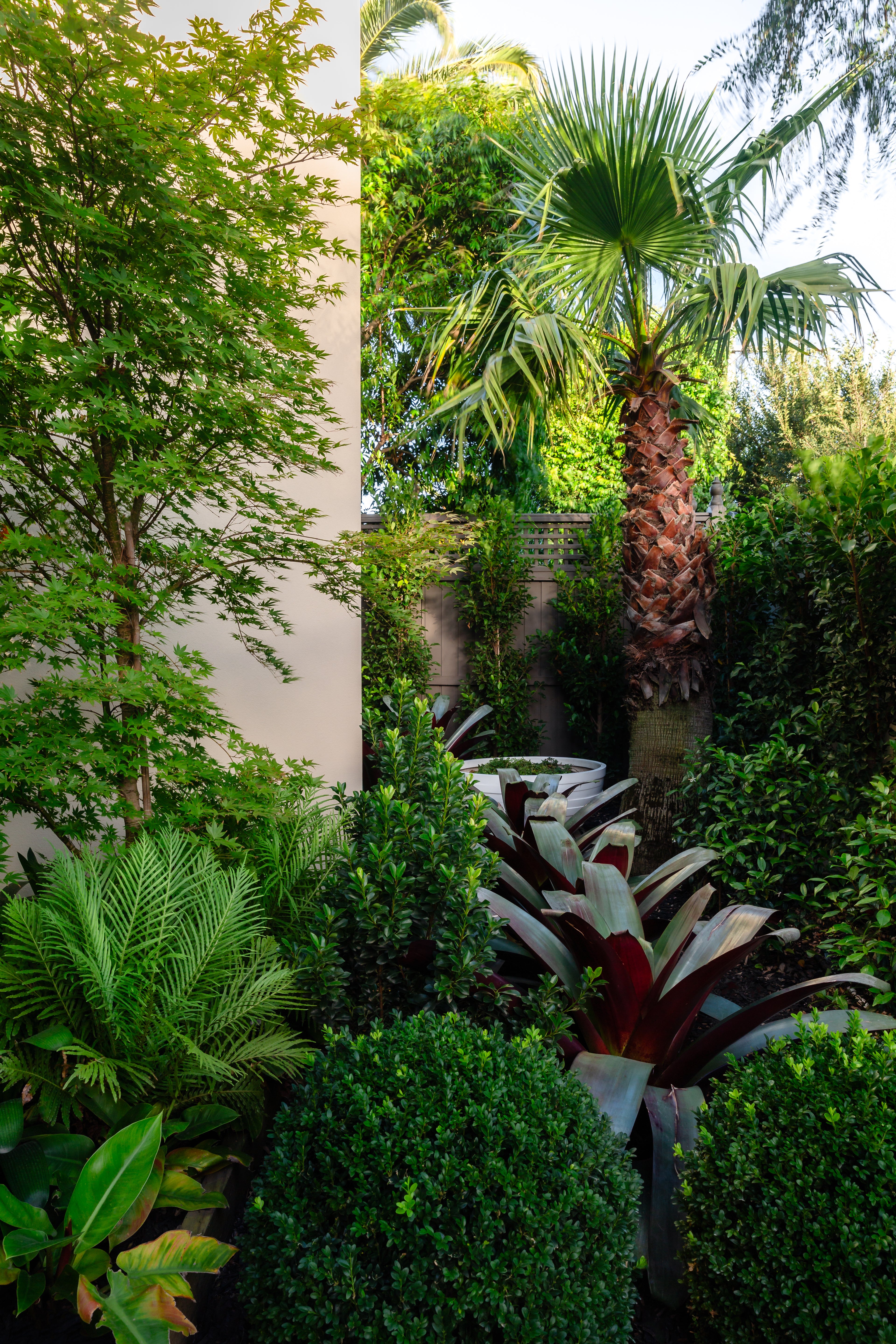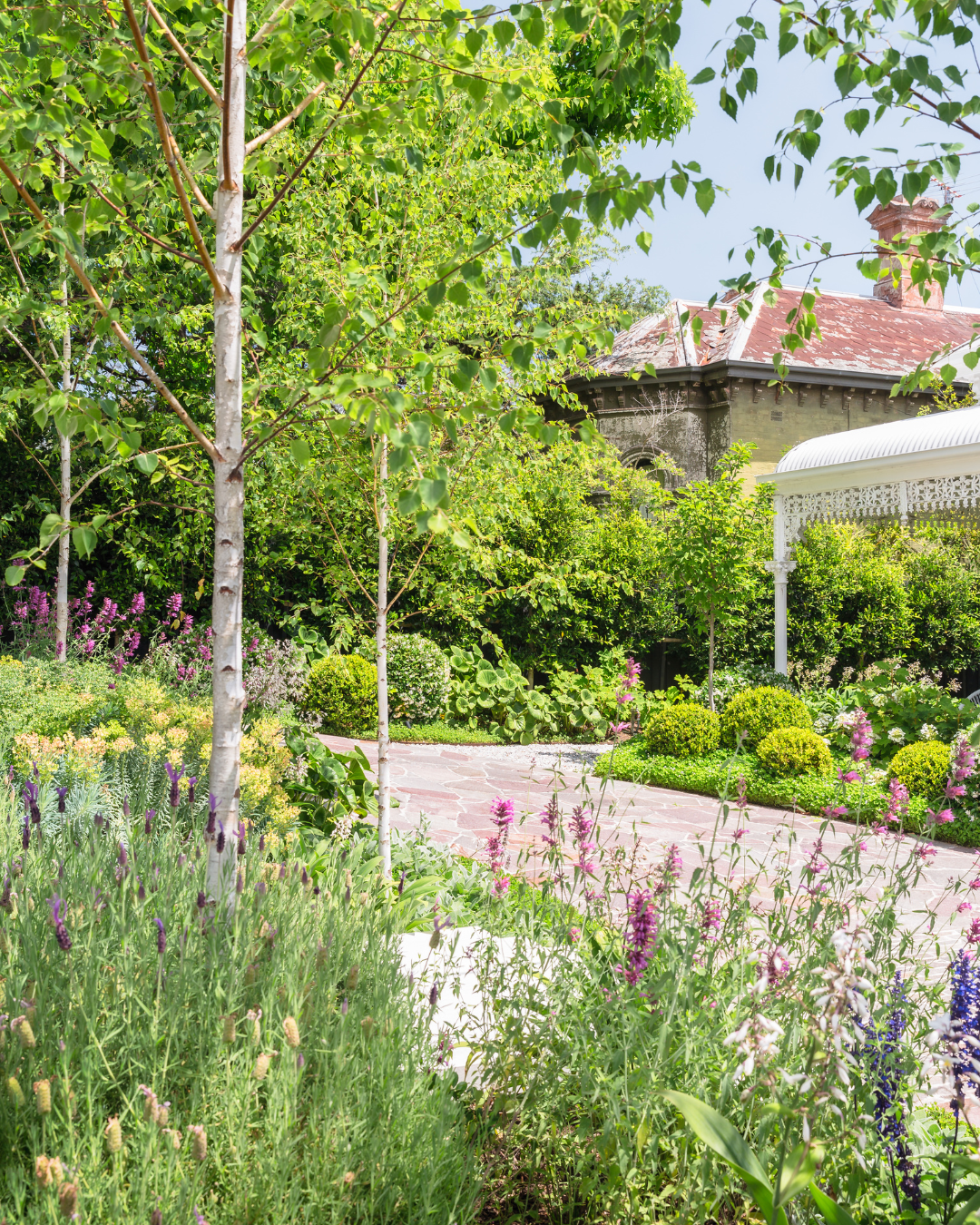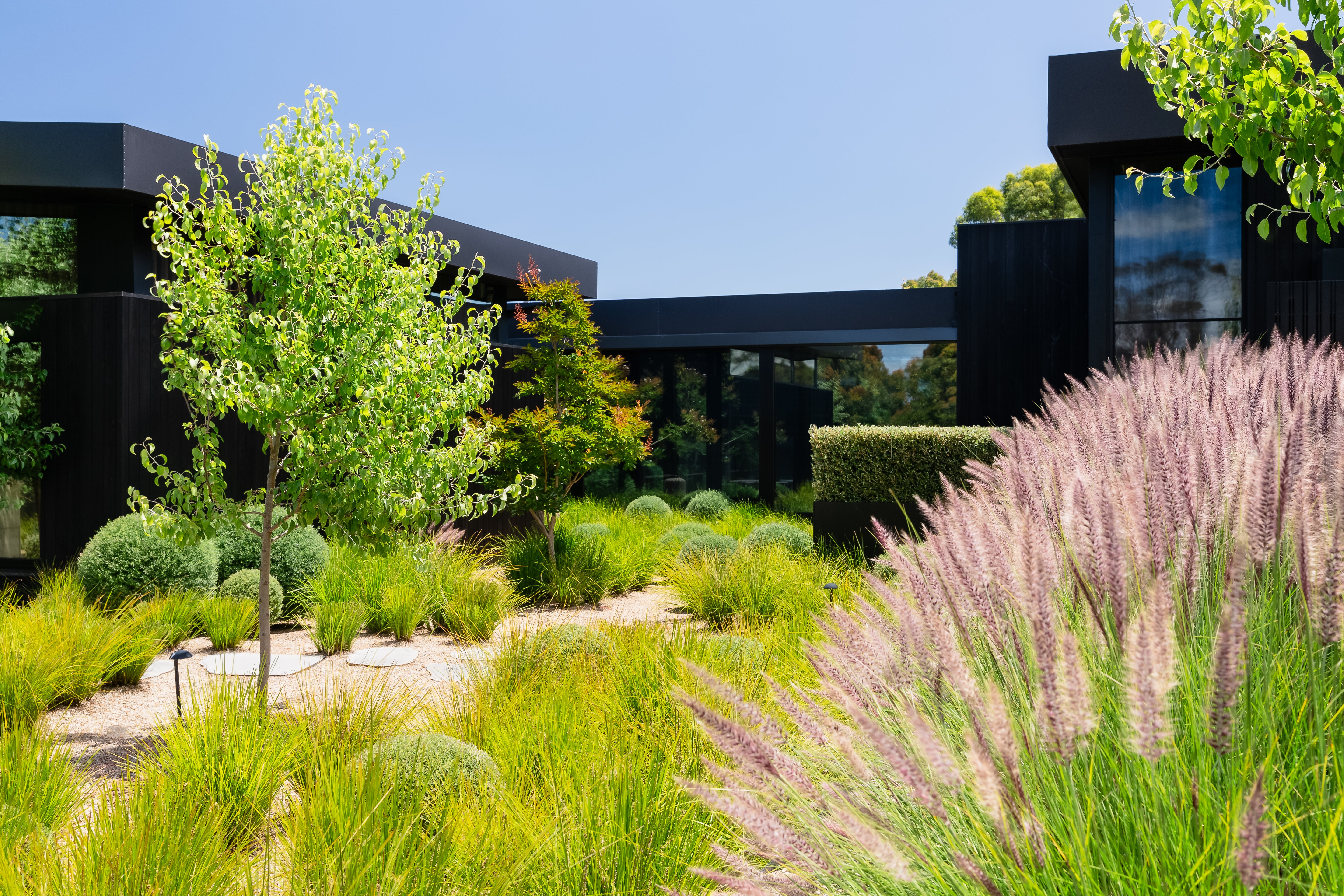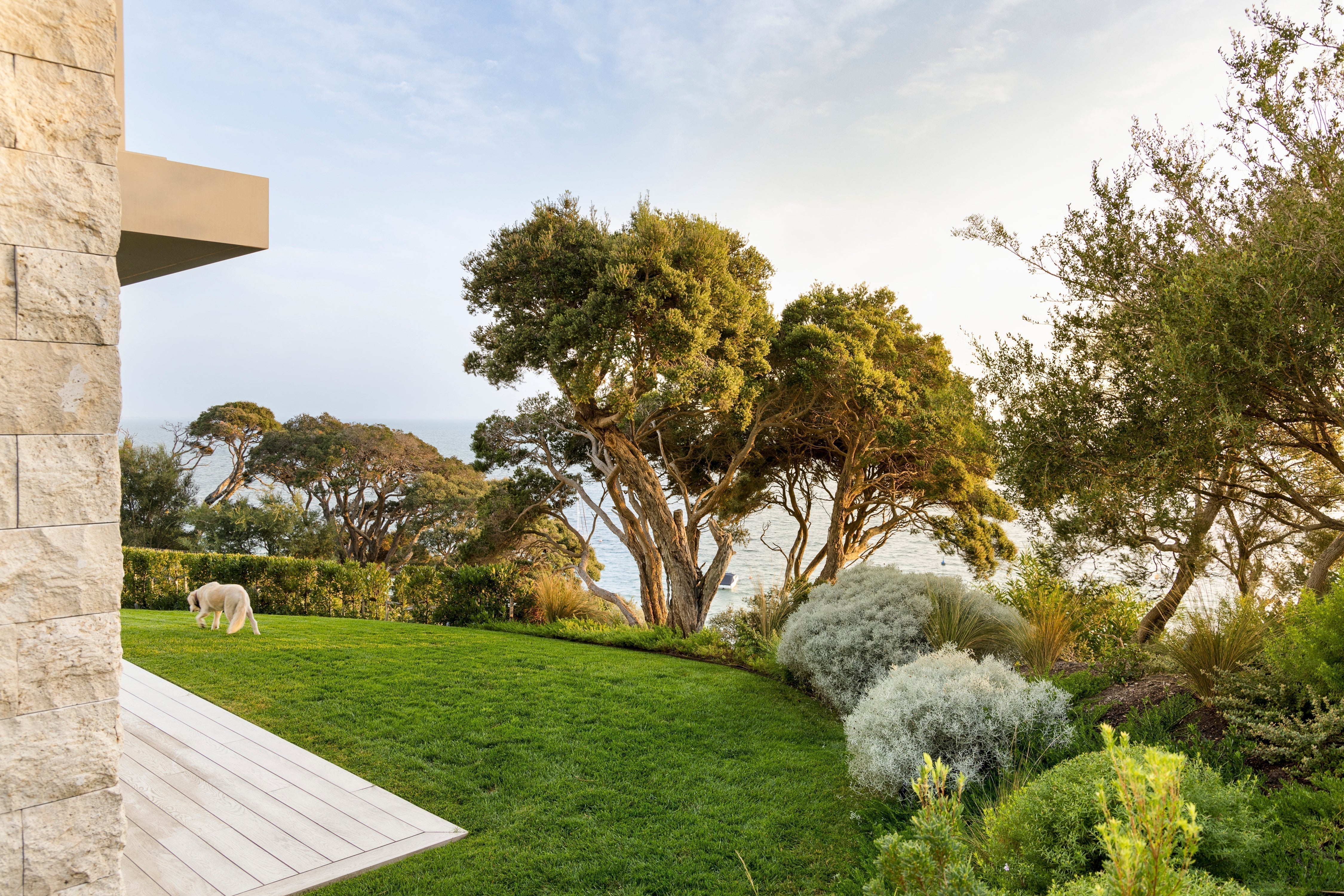
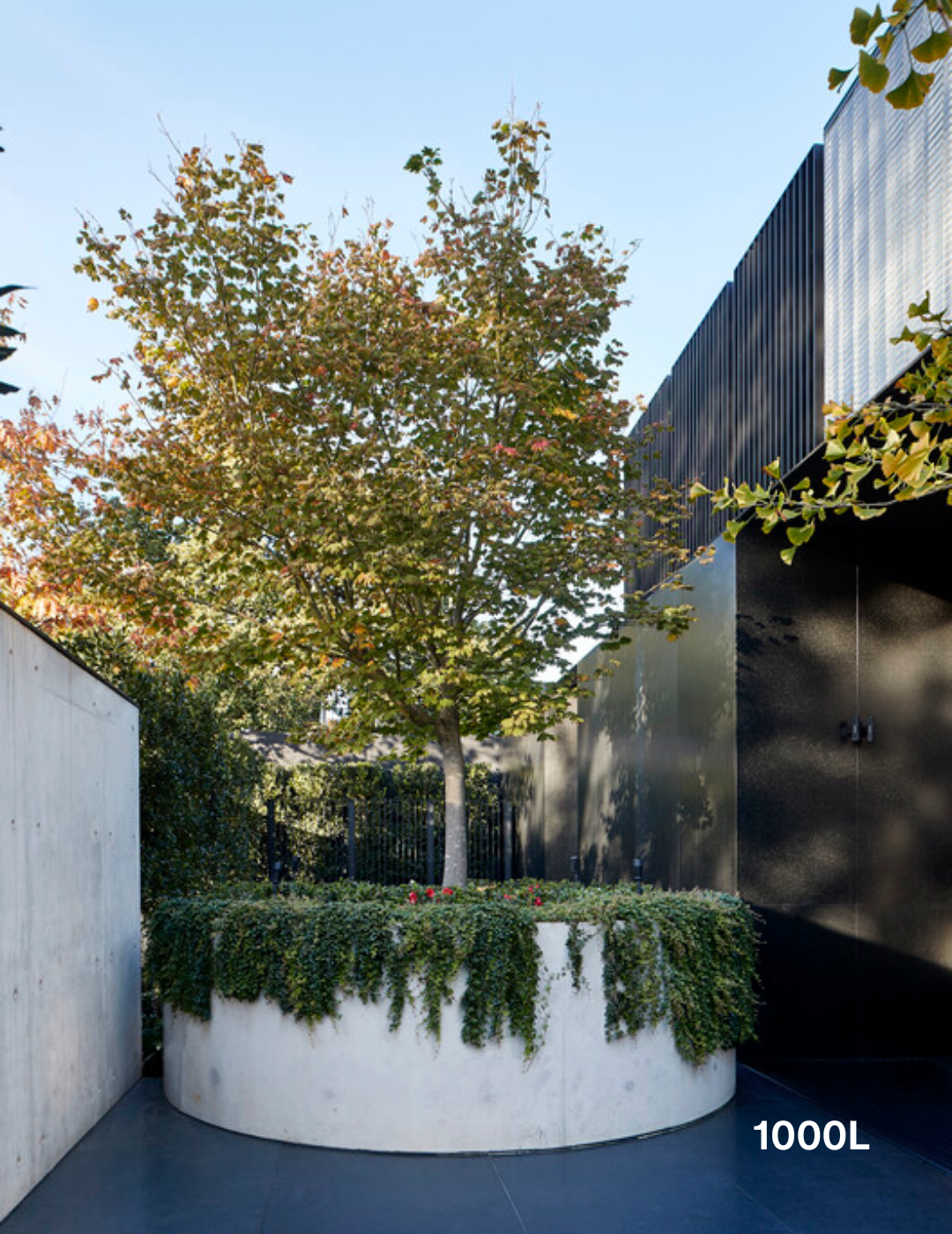
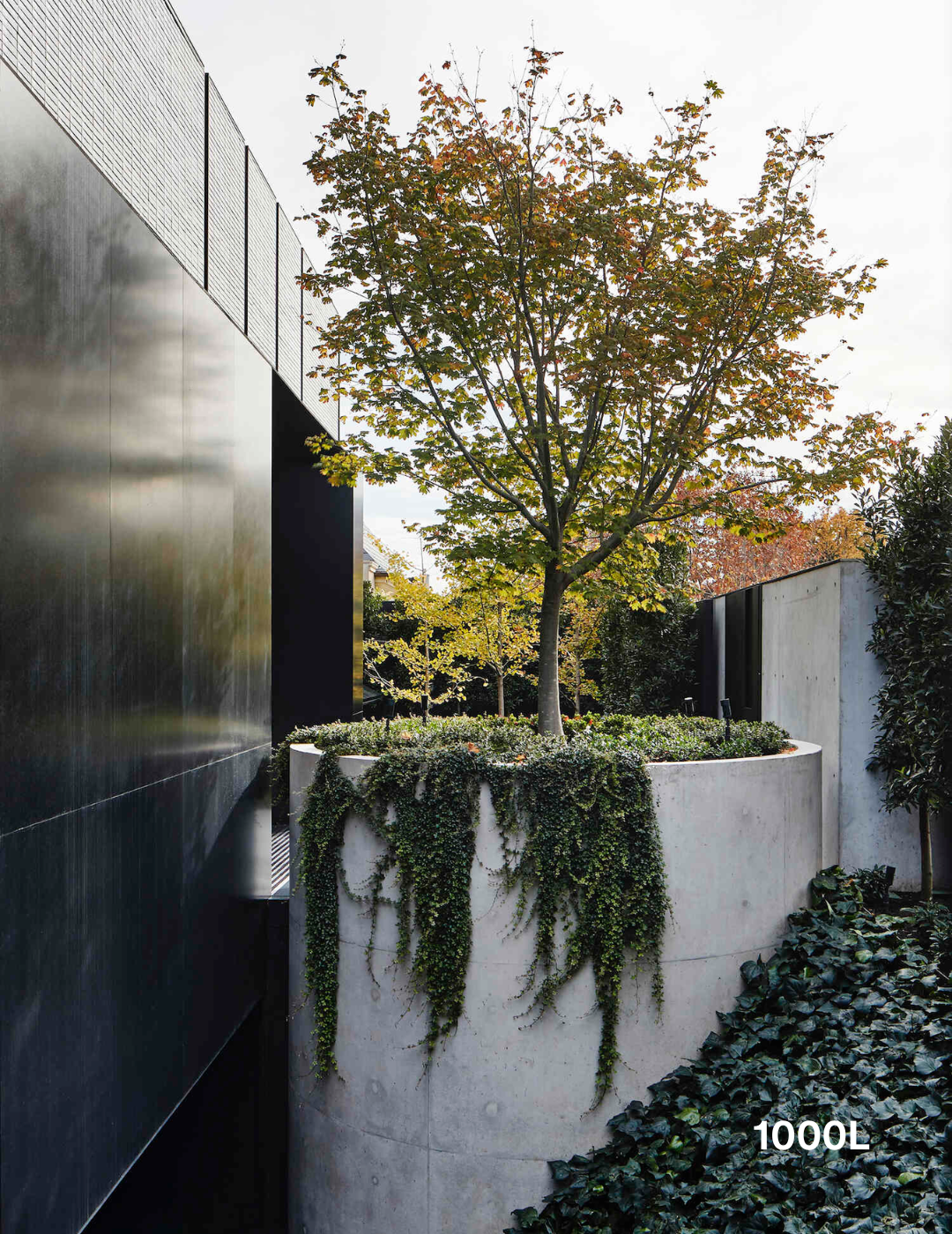
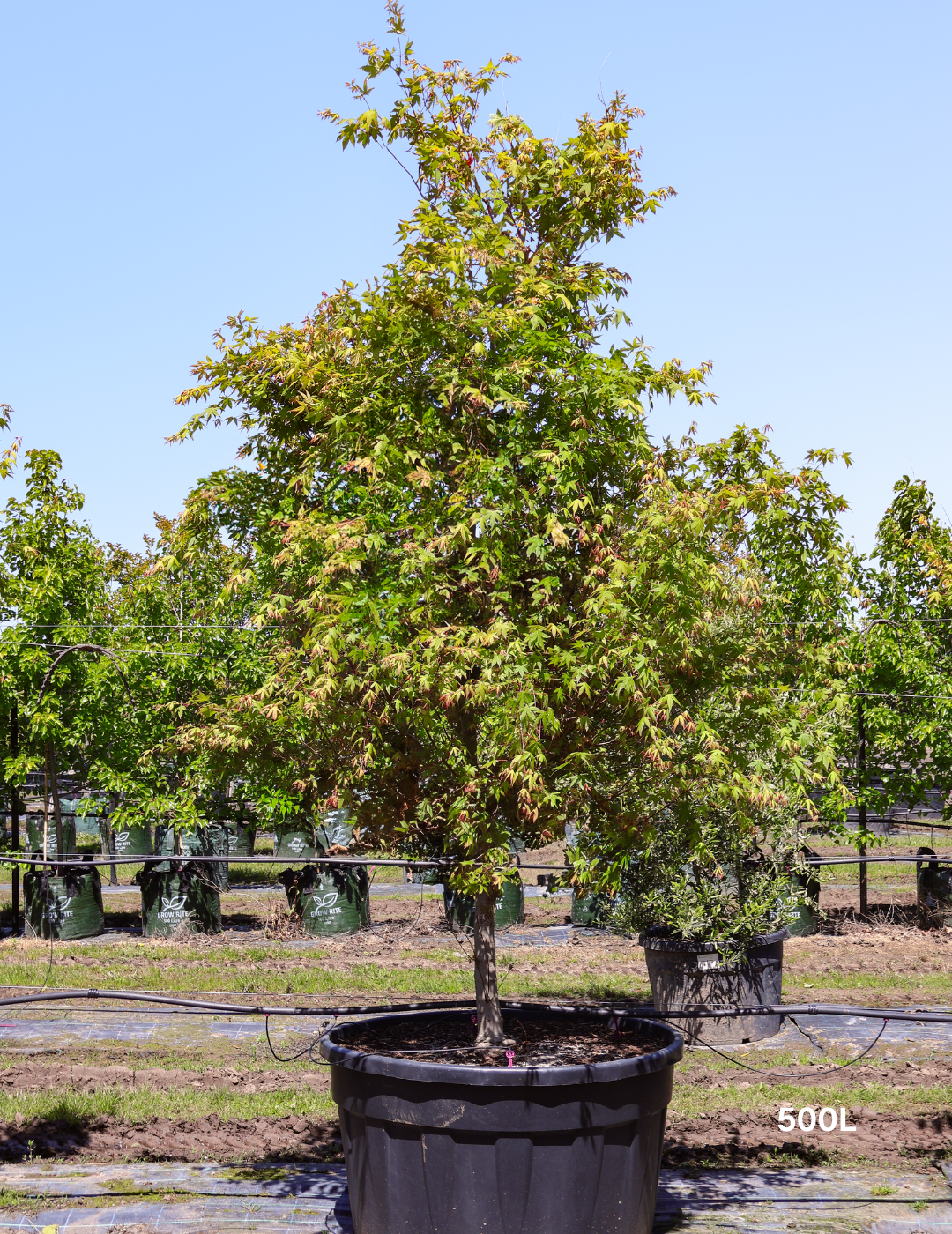
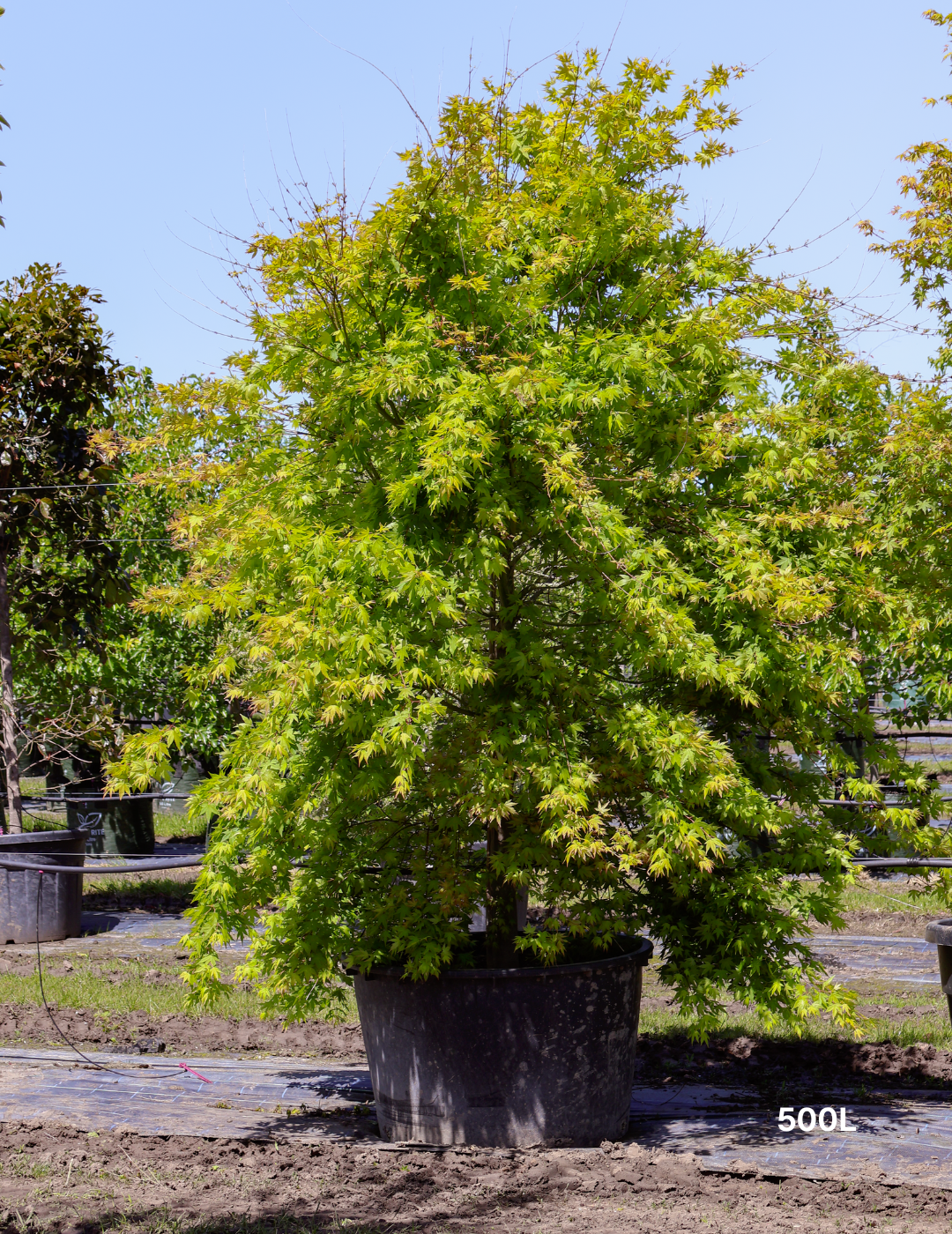
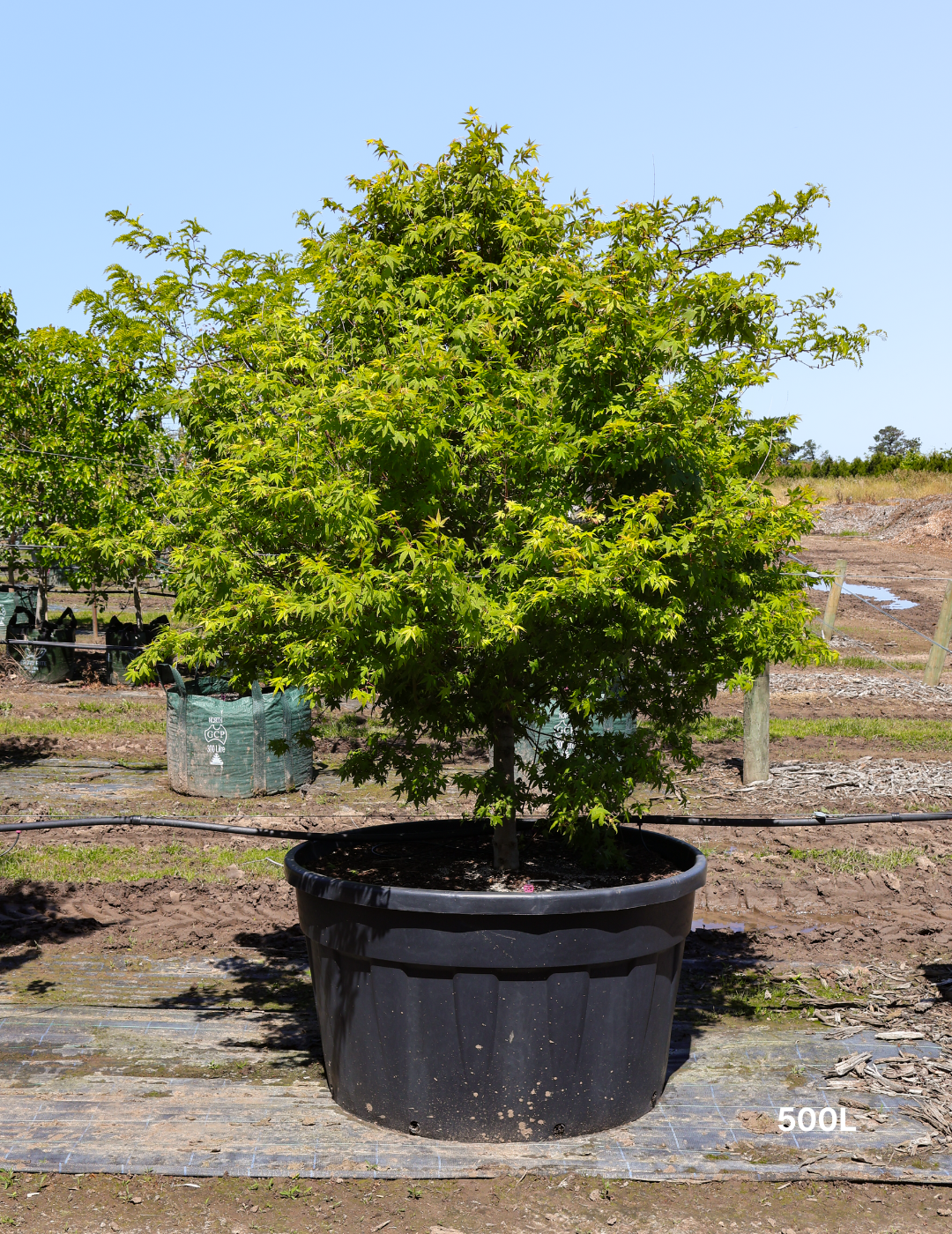
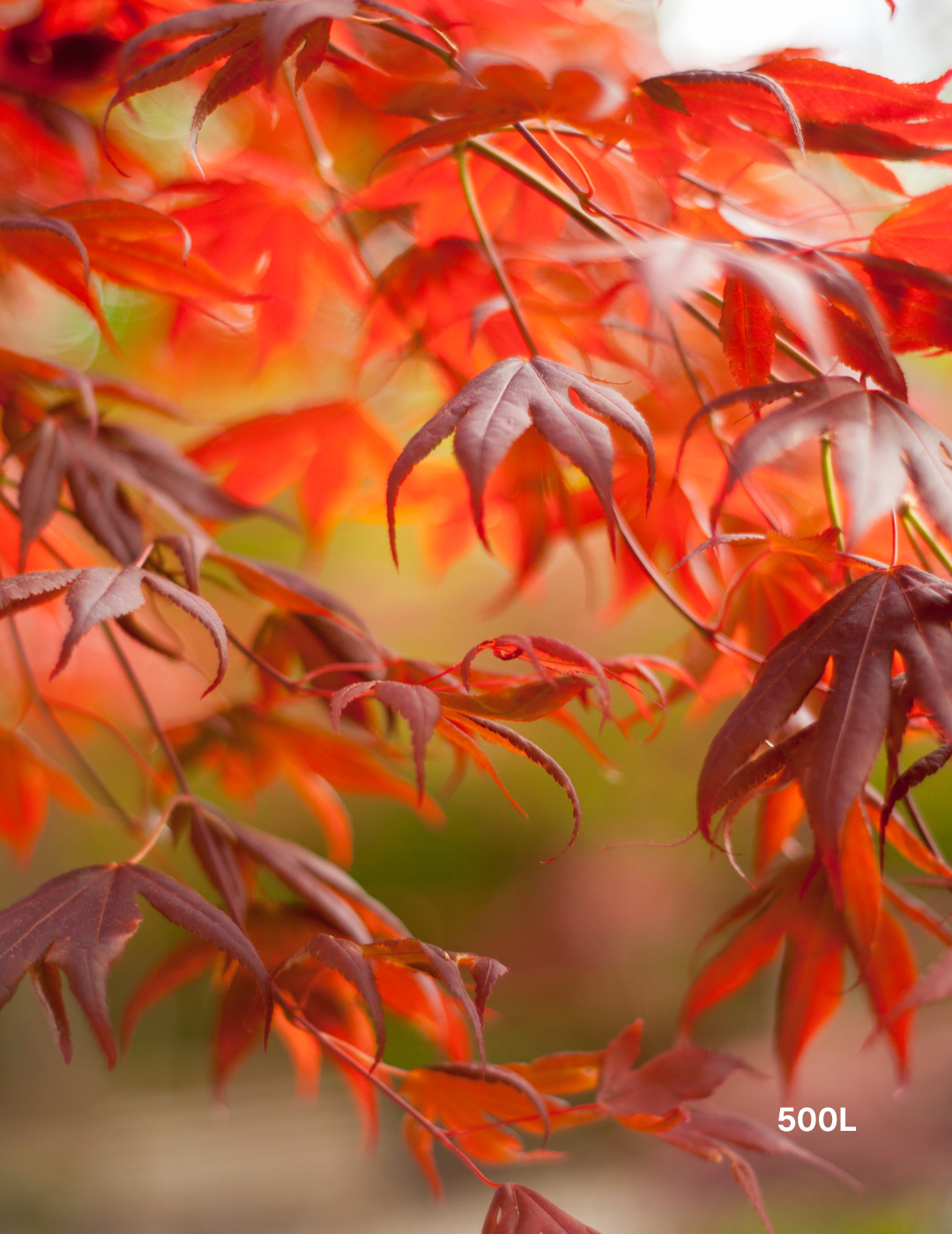
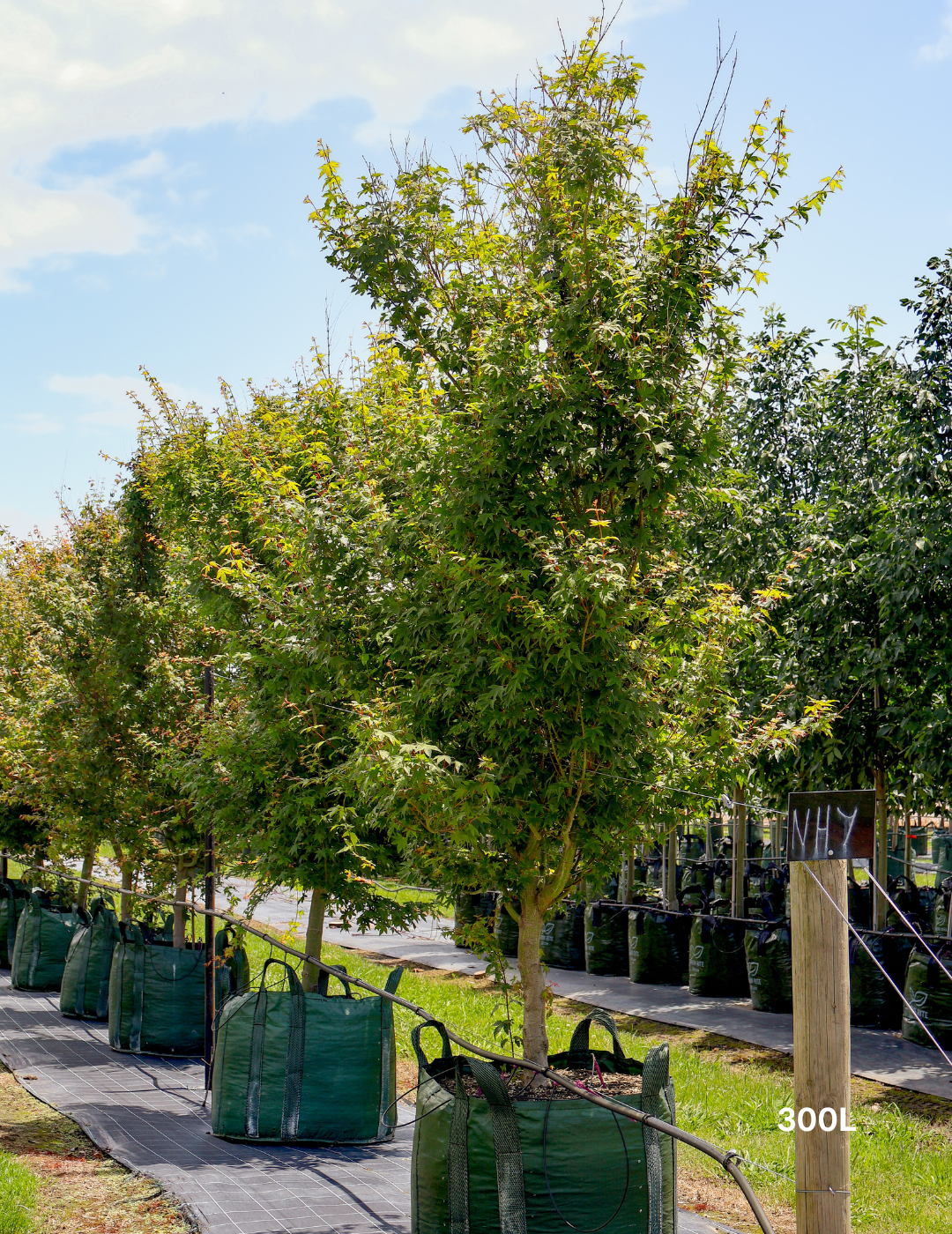
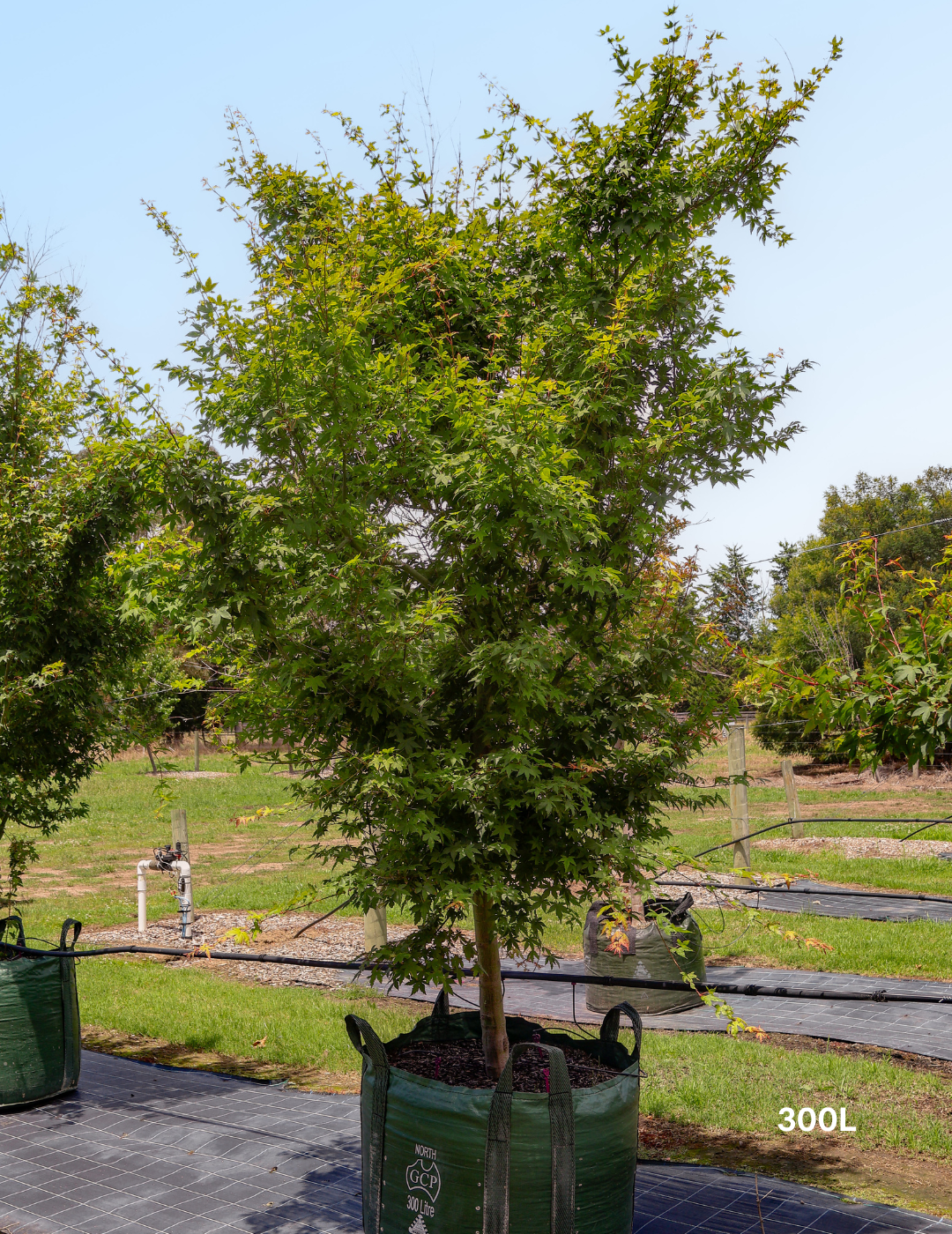

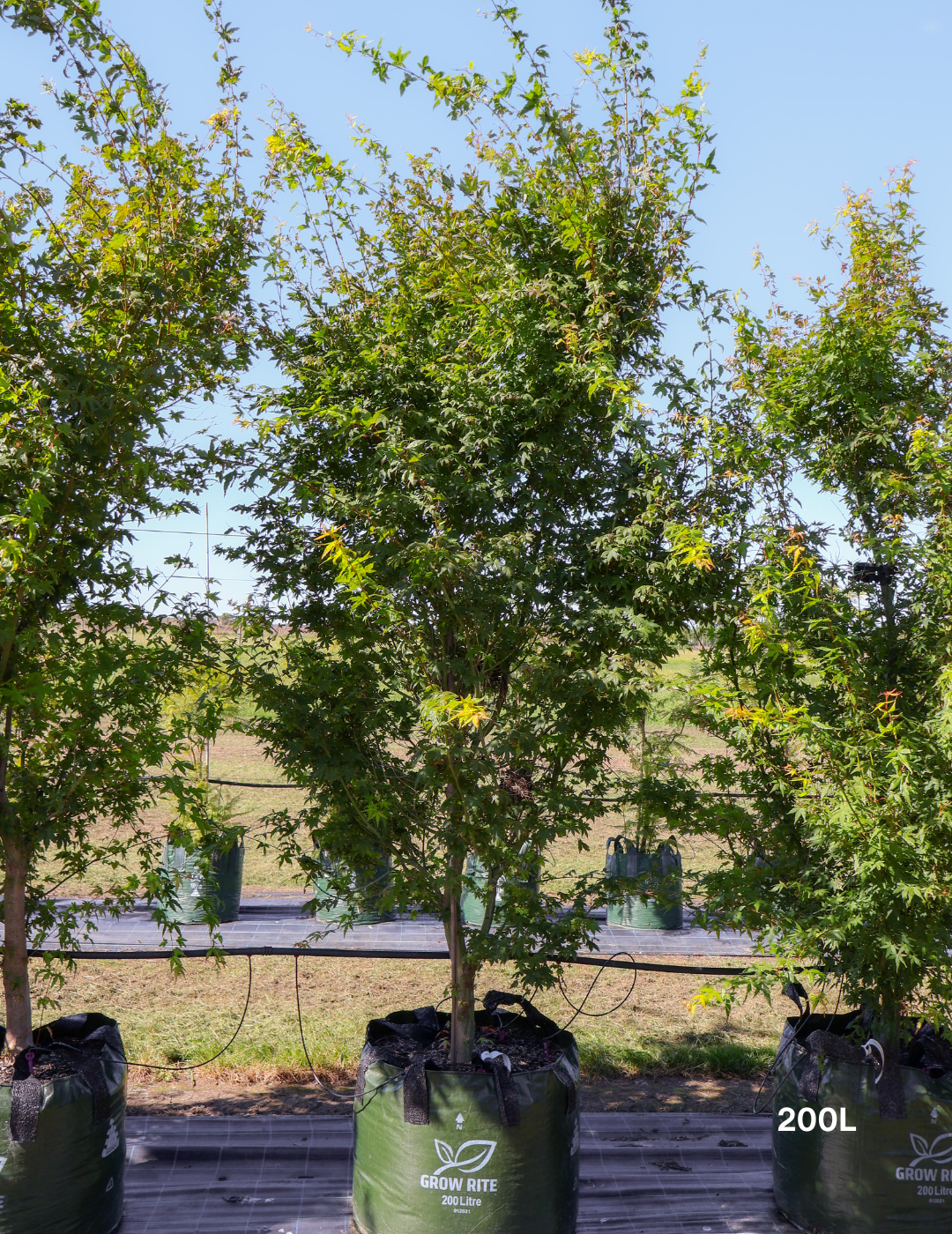
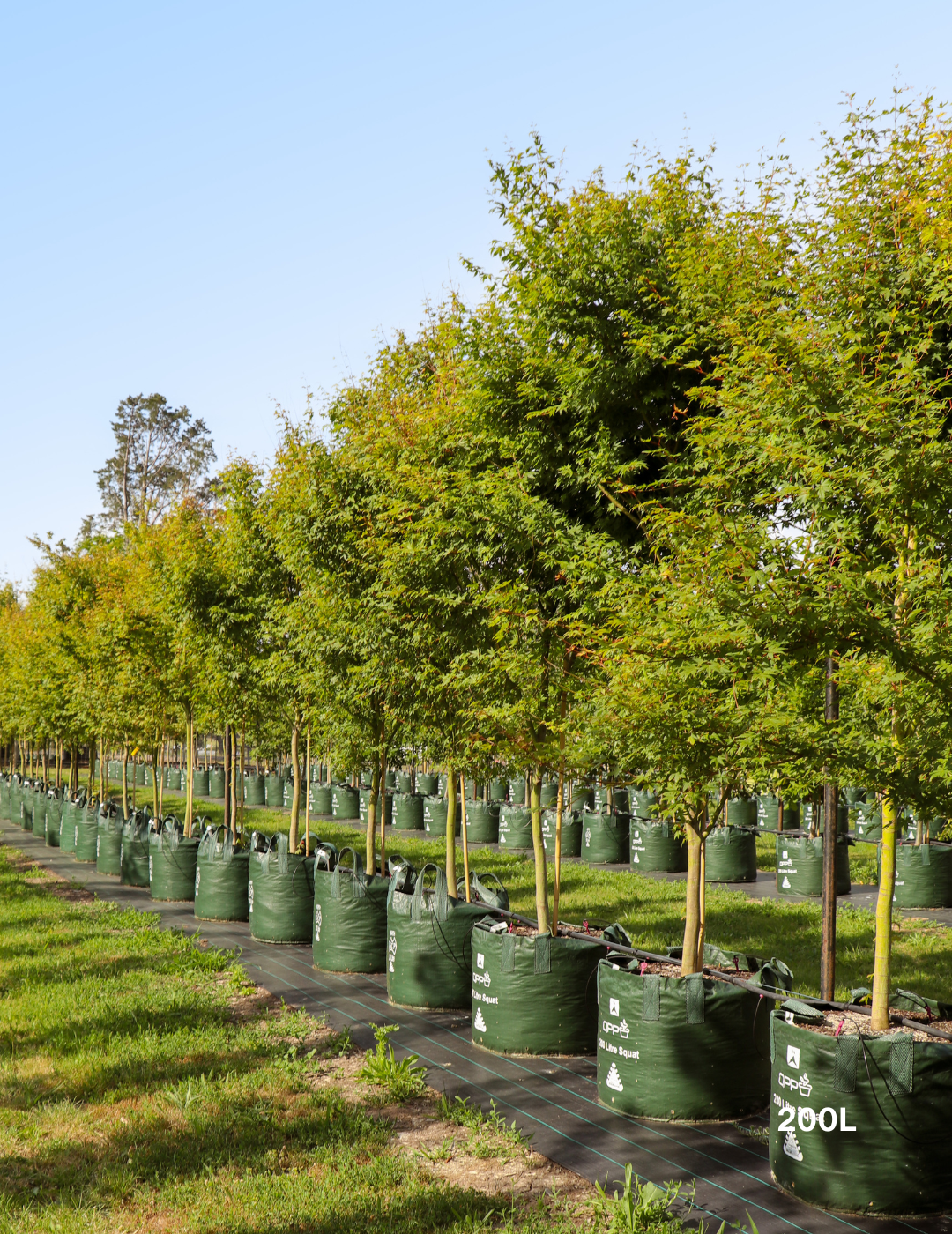
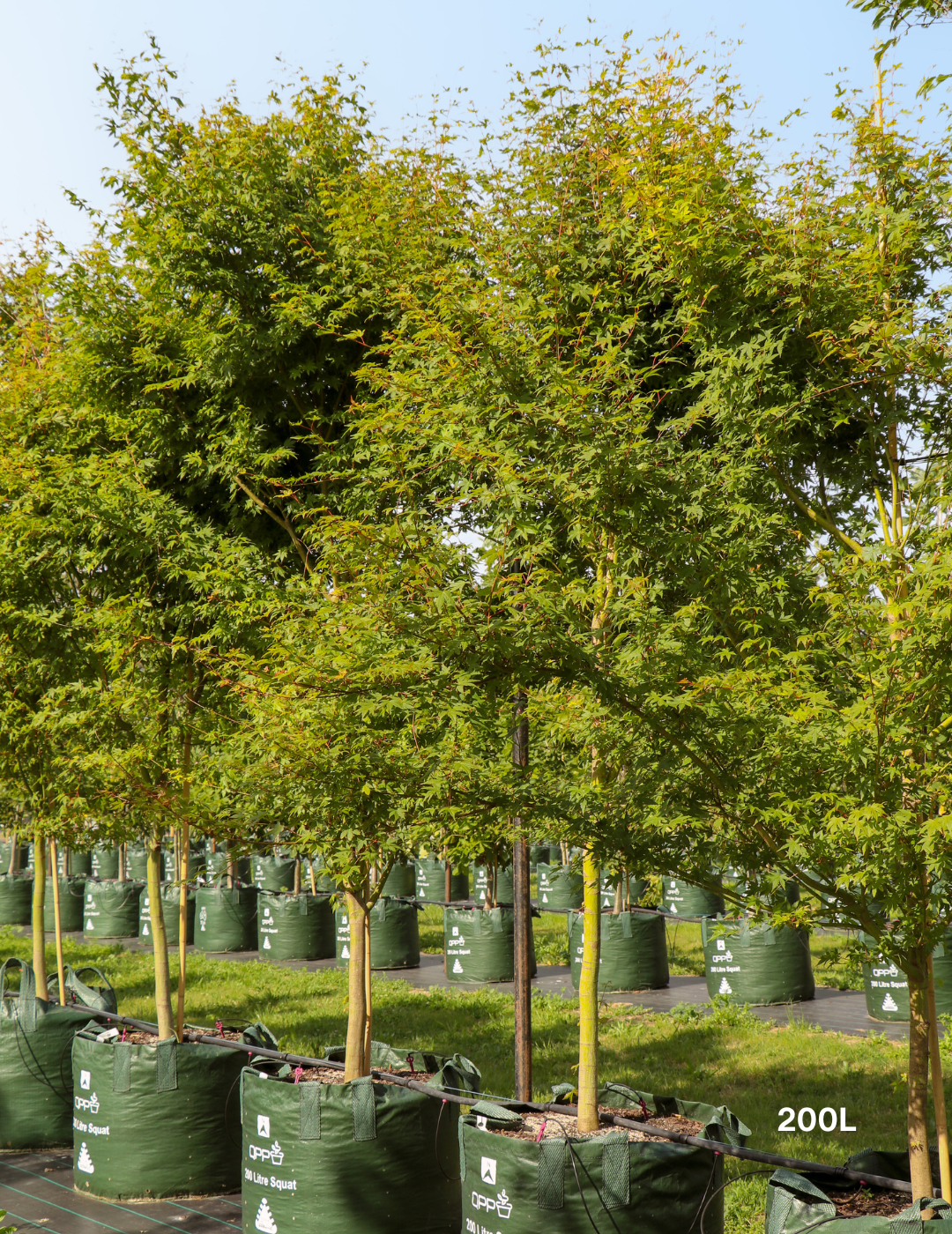

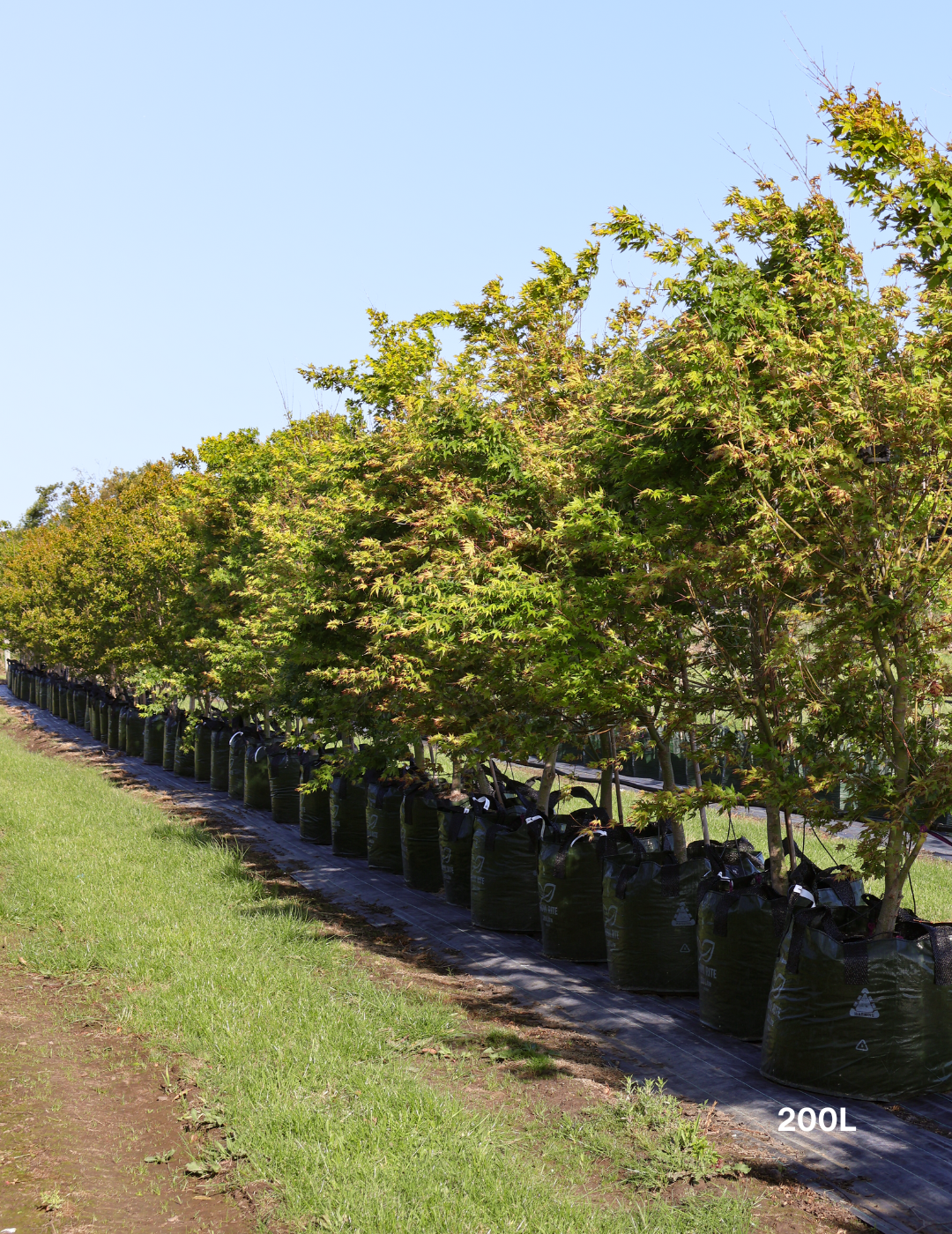
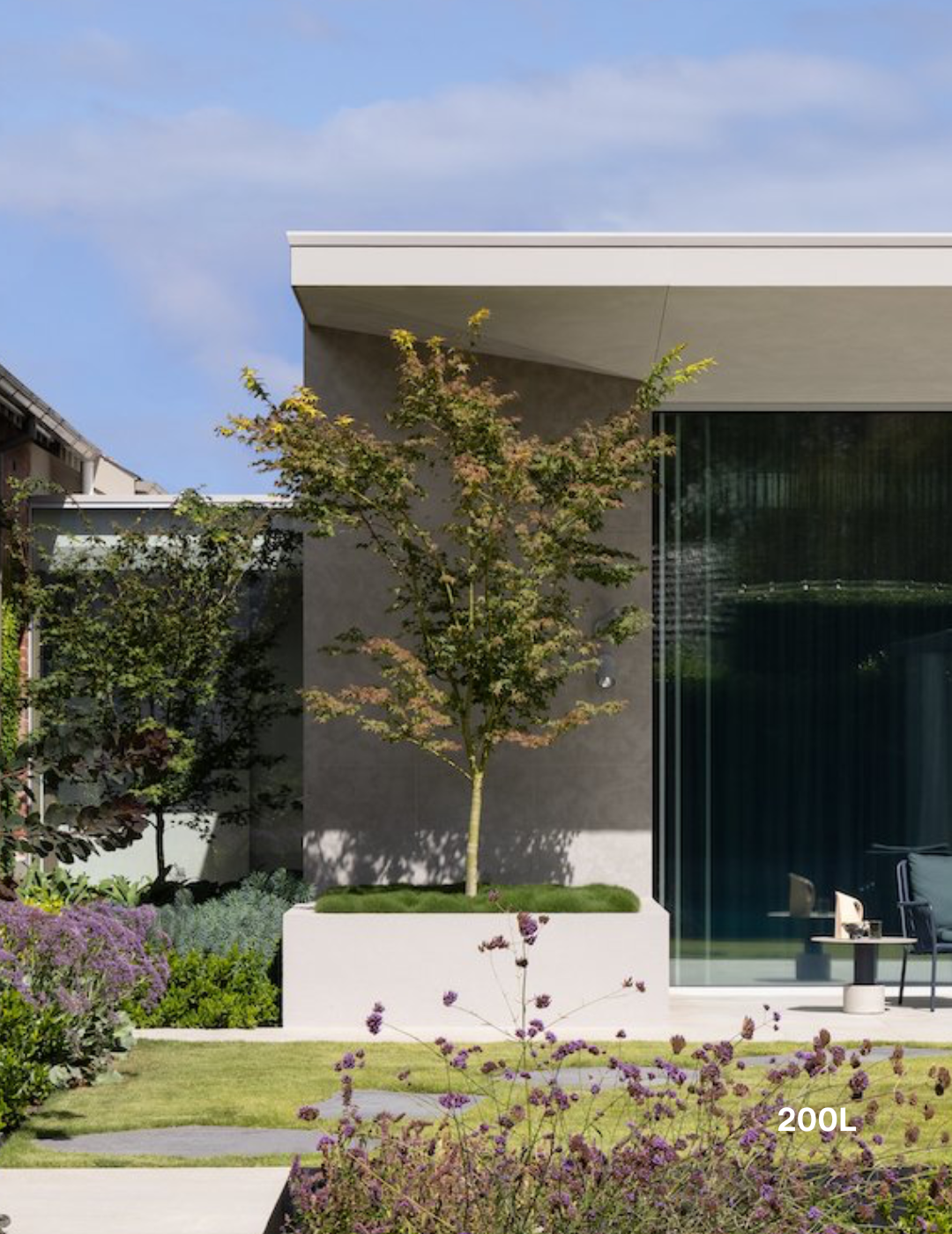
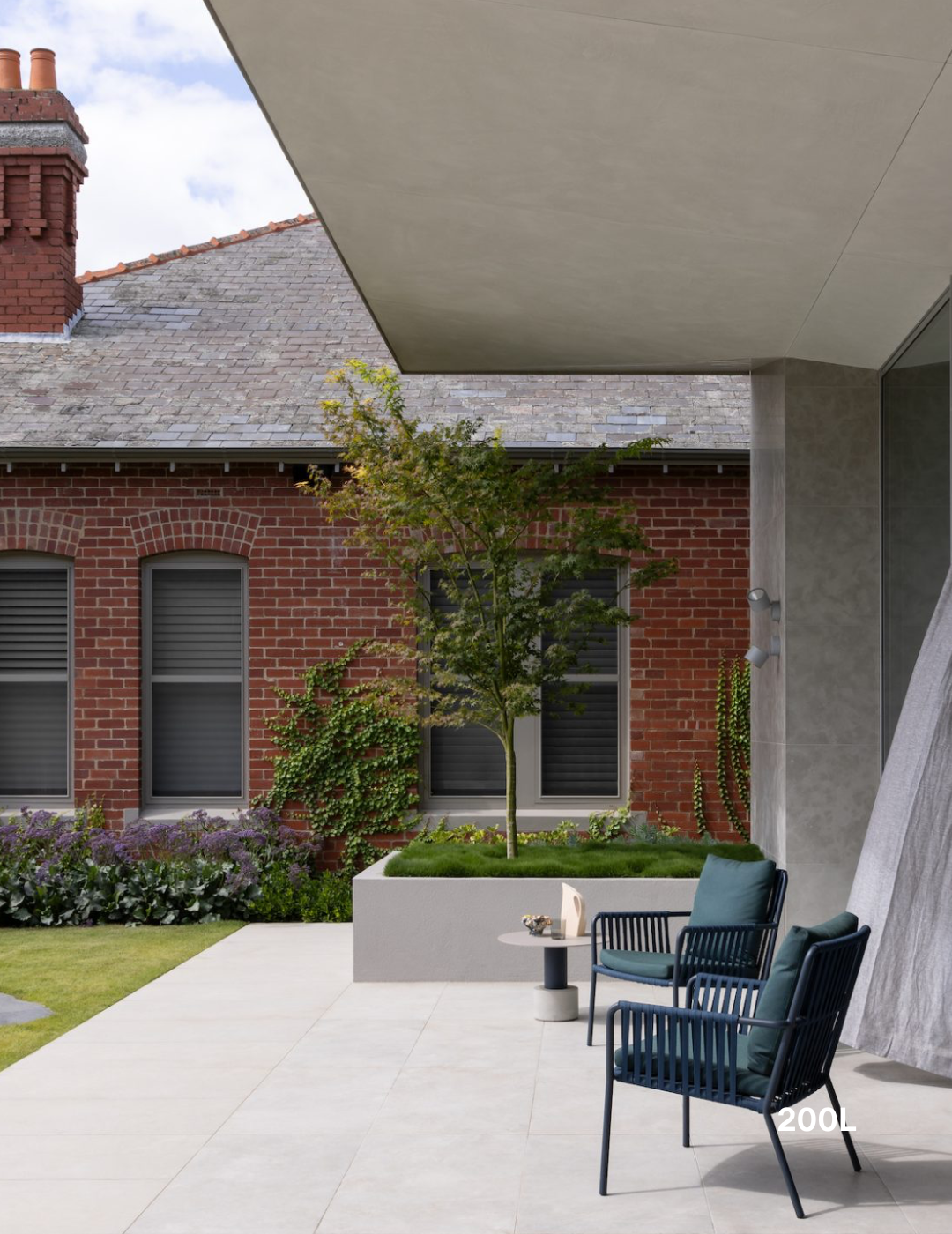
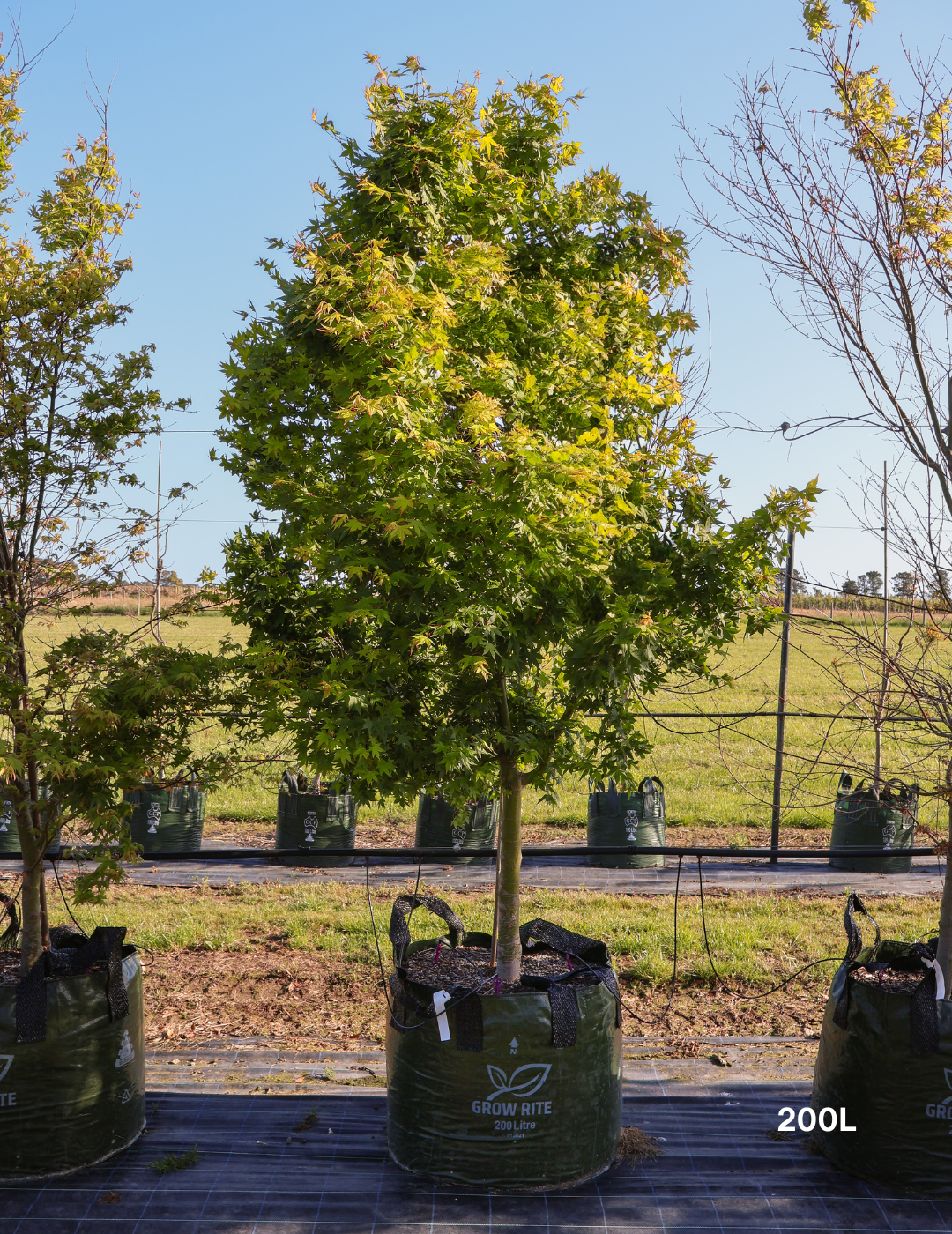
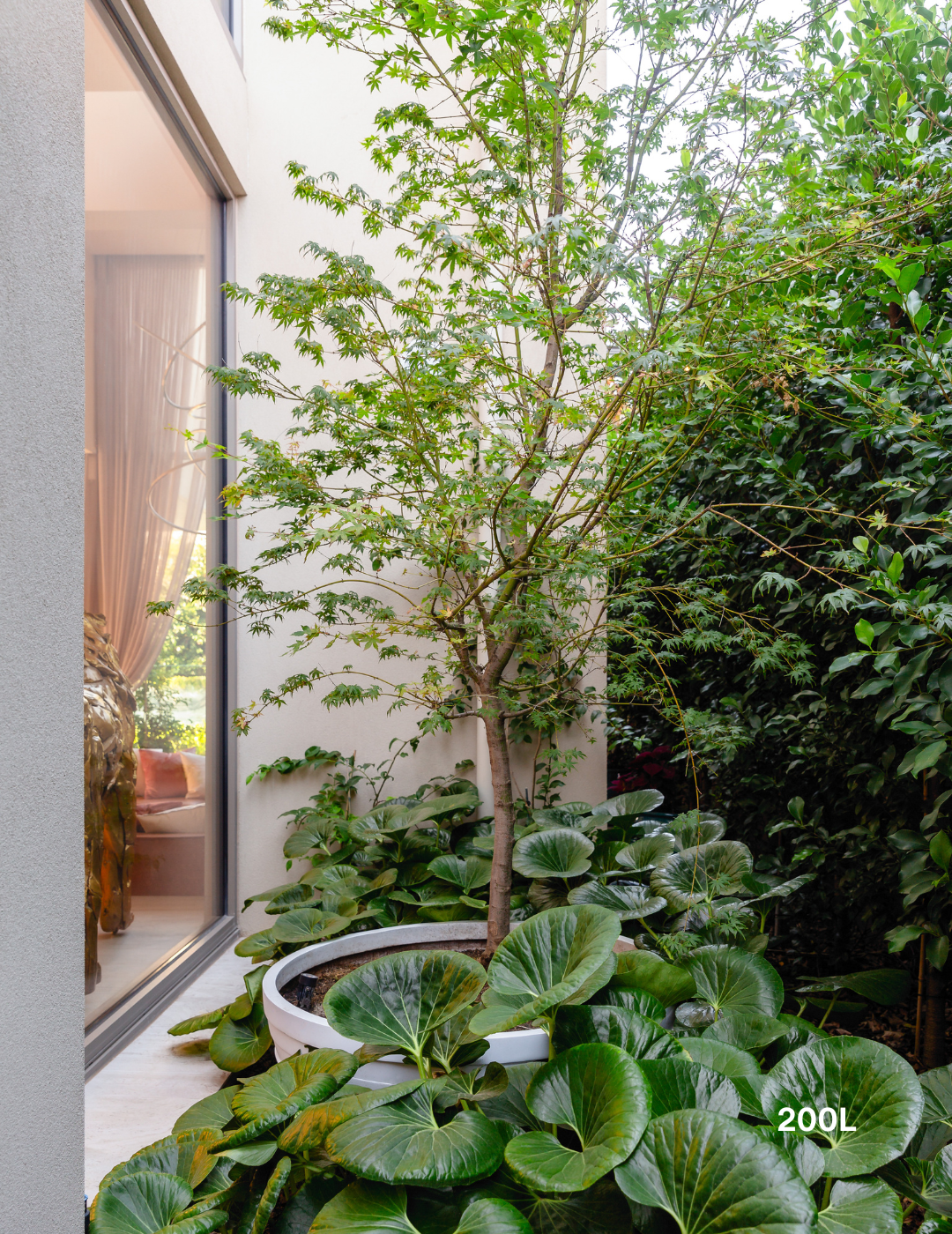
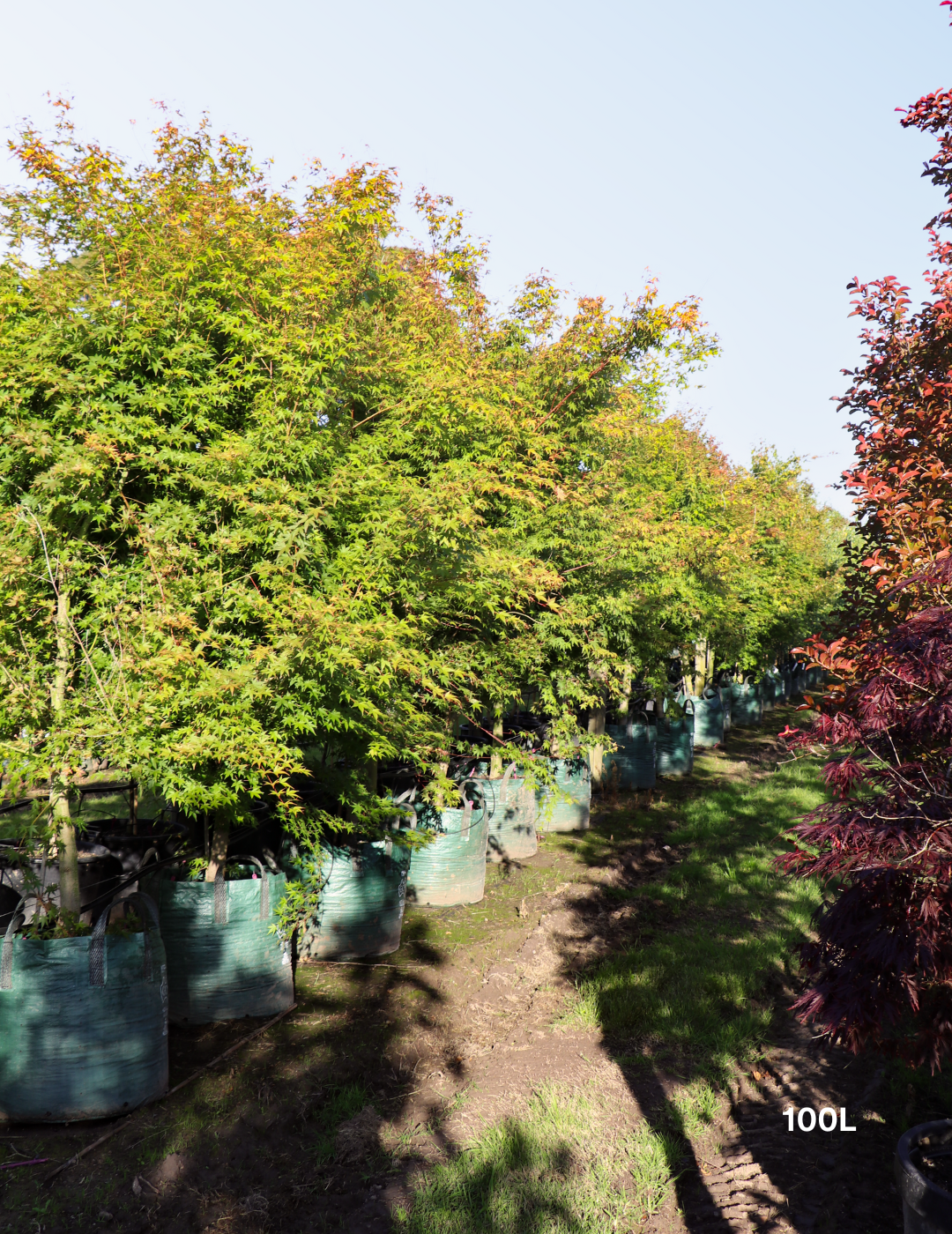
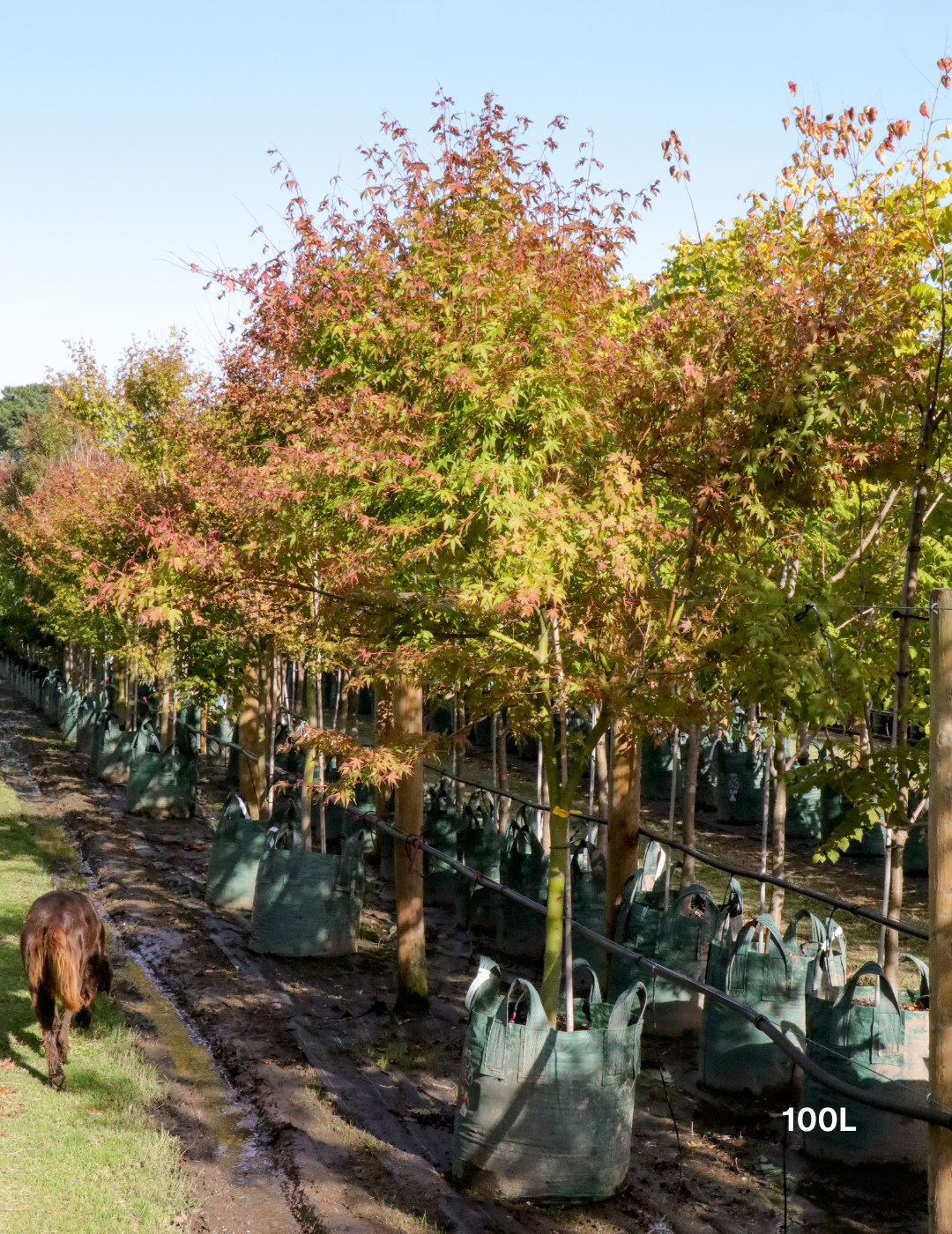
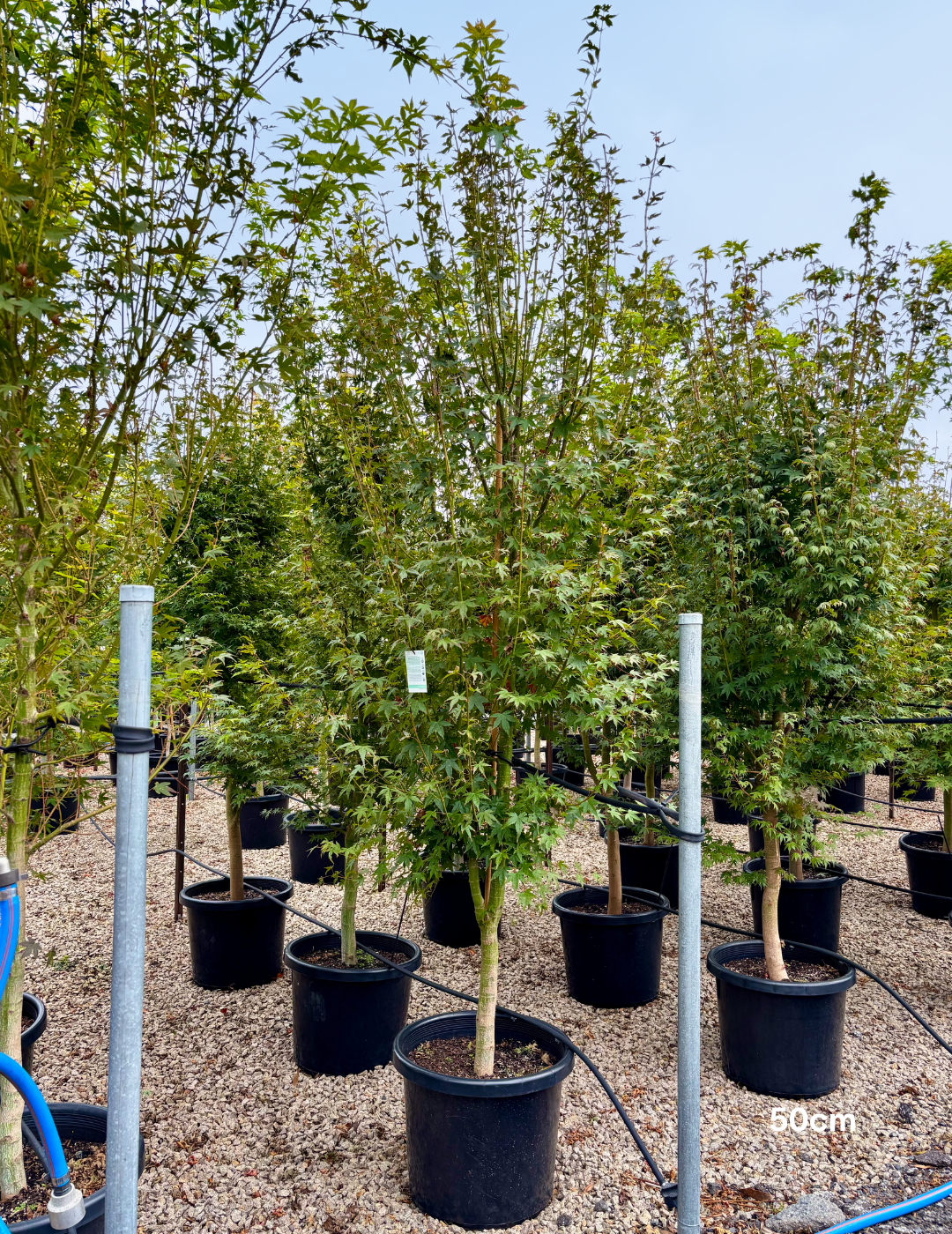
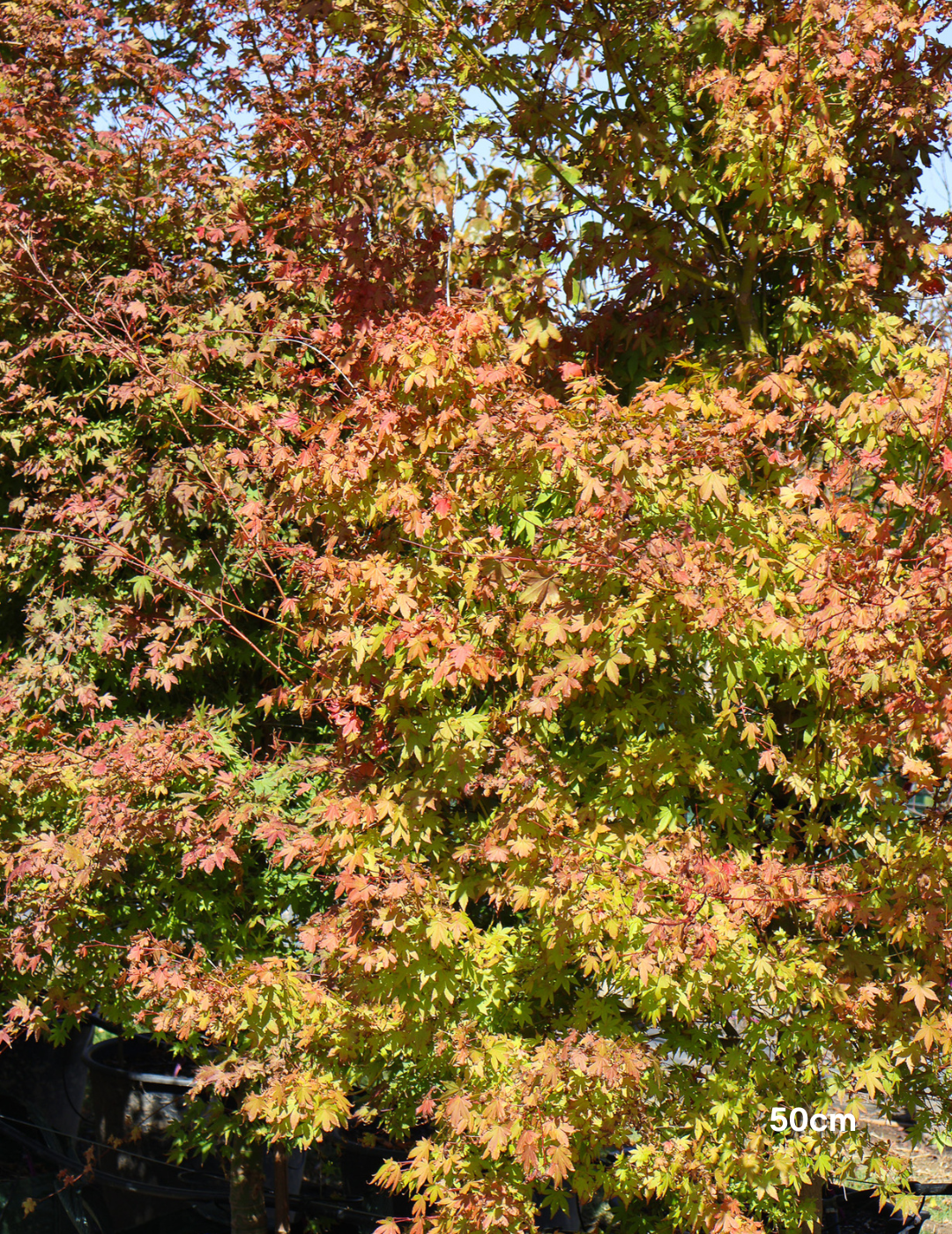

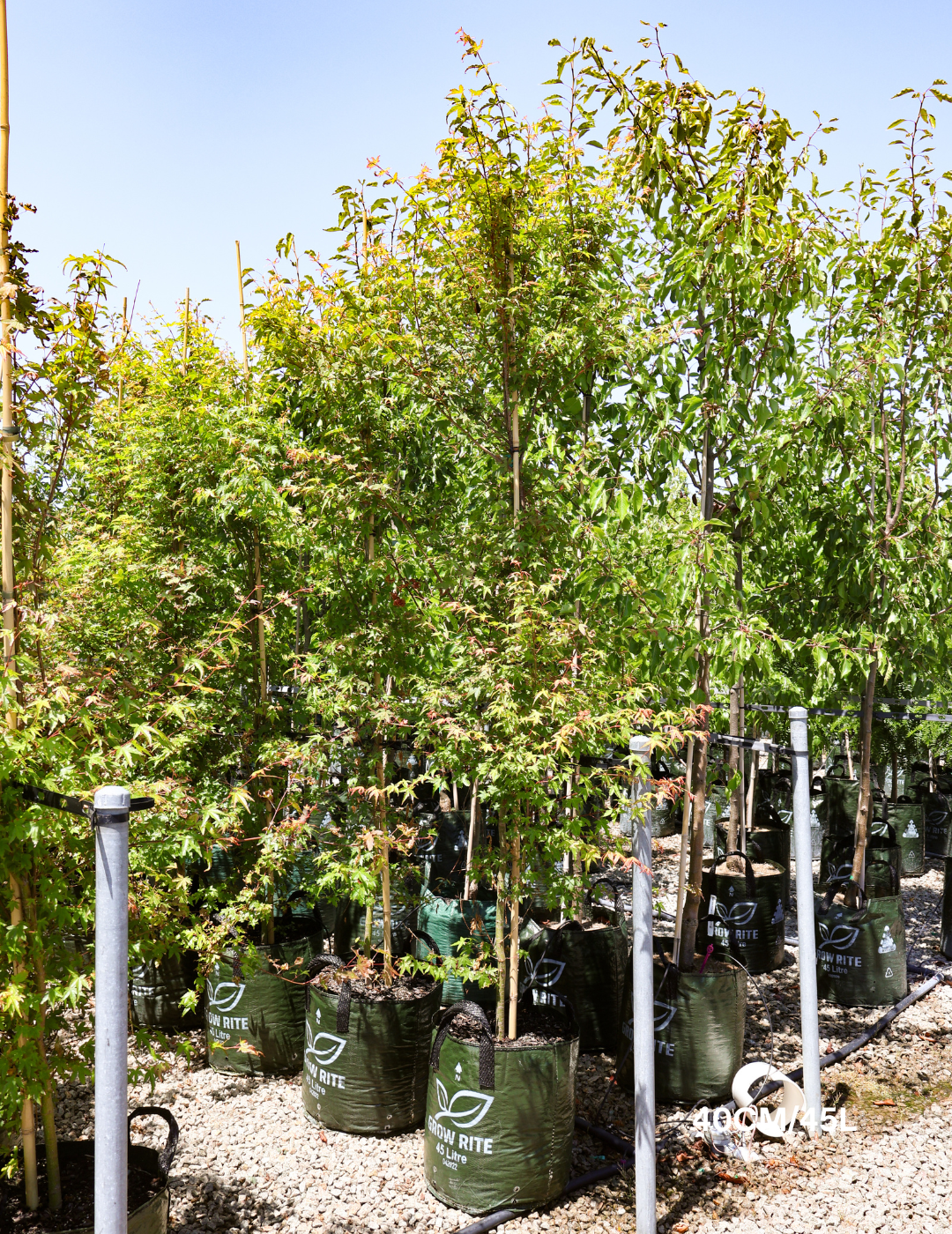
Acer palmatum - Japanese Maple
- Regular price
- $5,000.00
- Sale price
- $5,000.00
- Regular price
-
Learn About Your New Acer palmatum - Japanese Maple
Acer palmatum – Japanese Maple is a compact, deciduous ornamental tree known for its finely lobed foliage, strong autumn colour, and elegant structure. With a mature height of 3 to 6 metres and width of 2 to 5 metres, it is suited to small gardens, courtyards, garden beds, and larger landscape designs requiring seasonal impact without excessive size.
Foliage emerges in spring in tones of green, bronze, or burgundy, transitioning to bright red, orange, or gold in autumn. During winter, the tree’s fine branching provides architectural interest and contrast in bare gardens. Acer palmatum – Japanese Maple is often used as a feature tree, in understorey layers, or in Japanese-style and structured planting schemes.
This species grows with a moderate rate, maintains a refined, compact form, and performs with low maintenance once established. It is frost-tolerant and adaptable to cool and temperate climates.
Key Details
-
Botanical Name: Acer palmatum
-
Common Name: Japanese Maple
-
Mature Height: 3–6 metres
-
Mature Width: 2–5 metres
-
Foliage: Finely lobed; green, bronze, or burgundy in spring/summer
-
Autumn Colour: Red, orange, or gold
-
Form: Compact, branching structure
-
Growth Rate: Moderate
-
Deciduous: Yes
-
Maintenance: Low
-
Water Needs: Moderate
-
Frost Tolerant: Yes
Best Suited For
-
Feature tree in residential gardens
-
Courtyard and small-space plantings
-
Garden beds and layered designs
-
Understorey planting in shaded areas
-
Landscapes requiring seasonal colour and refined form
Why Choose Acer palmatum – Japanese Maple
Acer palmatum – Japanese Maple offers seasonal variation, compact growth, and strong ornamental value across all seasons. Its size and structure make it suitable for both intimate spaces and larger designed landscapes. With vivid autumn colour, minimal upkeep, and a wide range of landscape applications, it remains one of the most versatile small deciduous trees available.
Everything You Need to Know Before Planting Acer palmatum - Japanese Maple
Planting Tips for Acer palmatum - Japanese Maple
Root Ball Dimensions (Width × Depth) & Planting Guide for Acer palmatum - Japanese Maple
Use this as a reference when digging your planting hole. We recommend digging at least 10% wider than the dimensions below to encourage strong root development.
- 30cm Pot: 33cm (W) × 30cm (D)
- 40cm/45L Pot: 44cm (W) × 41.5cm (D)
- 50cm Pot: 49.5cm (W) × 35.2cm (D)
- 70L Pot: 55cm (W) × 41.8cm (D)
- 100L Bag: 50.6cm (W) × 52.8cm (D)
- 100L Pot: 66cm (W) × 49.5cm (D)
- 150L Bag: 66cm (W) × 55cm (D)
- 200L Bag: 71.5cm (W) × 60.5cm (D)
- 300L Bag: 88cm (W) × 63.8cm (D)
- 400L Bag: 99cm (W) × 66cm (D)
- 500L Bag: 122cm (W) × 66cm (D)
- 750L Bag: 134cm (W) × 69cm (D)
- 1000L Bag: 146.3cm (W) × 71.5cm (D)
- 2000L Bag: 176cm (W) × 82.5cm (D)
Growing Acer palmatum - Japanese Maple in Various Soil Types
Watering Requirements After Planting Your Acer palmatum - Japanese Maple
When planting a new tree or shrub, proper watering is essential to ensure healthy establishment and long-term growth. Follow these guidelines to give your plant the best start:
- Immediately After Planting:
Water generously right after planting to settle the soil around the roots and eliminate air pockets. This helps the roots make good contact with the soil. - First Three Months (Establishment Phase):
The initial three months are critical for root development. Water deeply twice daily (morning and evening) to encourage strong, deep root growth. - Irrigation Systems:
If using an irrigation system, adjust it to provide adequate water during the establishment phase. Ensure the water reaches the root zone without overwatering. - Weather Considerations:
Adjust watering based on weather conditions. Increase frequency during hot, dry periods and reduce it during cooler, wetter seasons. - Ongoing Care:
After the establishment phase, gradually reduce watering frequency but ensure the plant receives consistent moisture, especially during dry spells.
By providing consistent and appropriate watering during the initial months, you’ll help your new tree or shrub establish a strong root system and thrive in your garden.
Frequently Asked Questions About Acer palmatum - Japanese Maple
Growing Your Acer palmatum - Japanese Maple in Various Soil Types
Need Assistance For Your Next Project?Let Us Help.
Evergreen Trees Direct is Australia's unrivaled supplier of the highest quality advanced tree stock. Our extensive supplier network allows us to provide a one-stop shop for all your landscaping needs, no matter how big or small the project. We pride ourselves on exceptional service, ensuring a seamless experience from selection to delivery. Trust us to bring your landscaping vision to life with the perfect trees for any outdoor space. With our unrivaled selection and commitment to service, Evergreen Trees Direct is the top choice for landscapers, property developers, and garden enthusiasts alike.
-
 A layered, resilient coastal garden designed to withstand harsh salt winds and seasonal extremes. This Mornington Peninsula property features a cur...
A layered, resilient coastal garden designed to withstand harsh salt winds and seasonal extremes. This Mornington Peninsula property features a cur... -
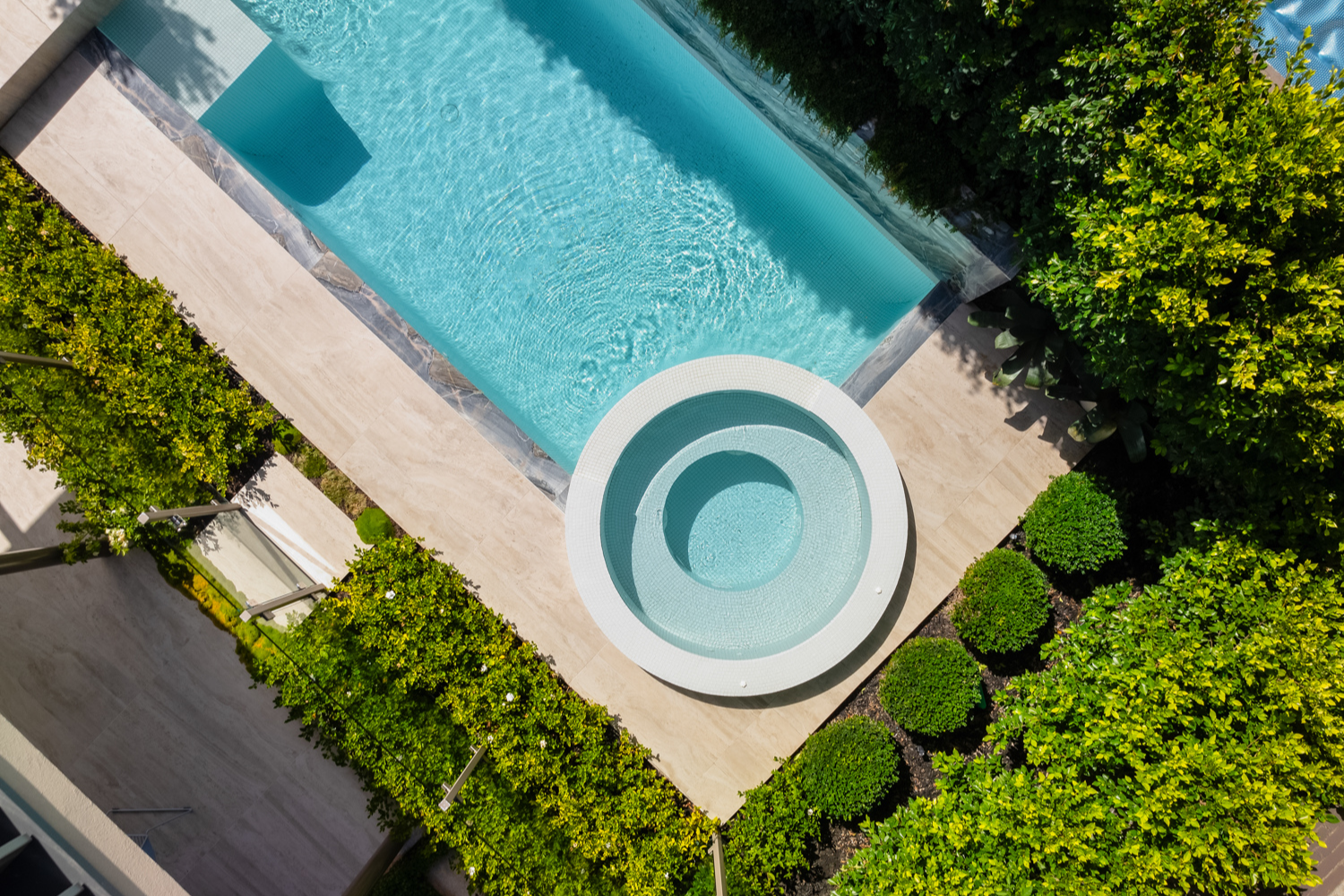
Brighton Project
Presenting our recent project in Brighton, Victoria, landscaped by Jack Merlo Landscape & Design. This modern landscape features a variety of h... -
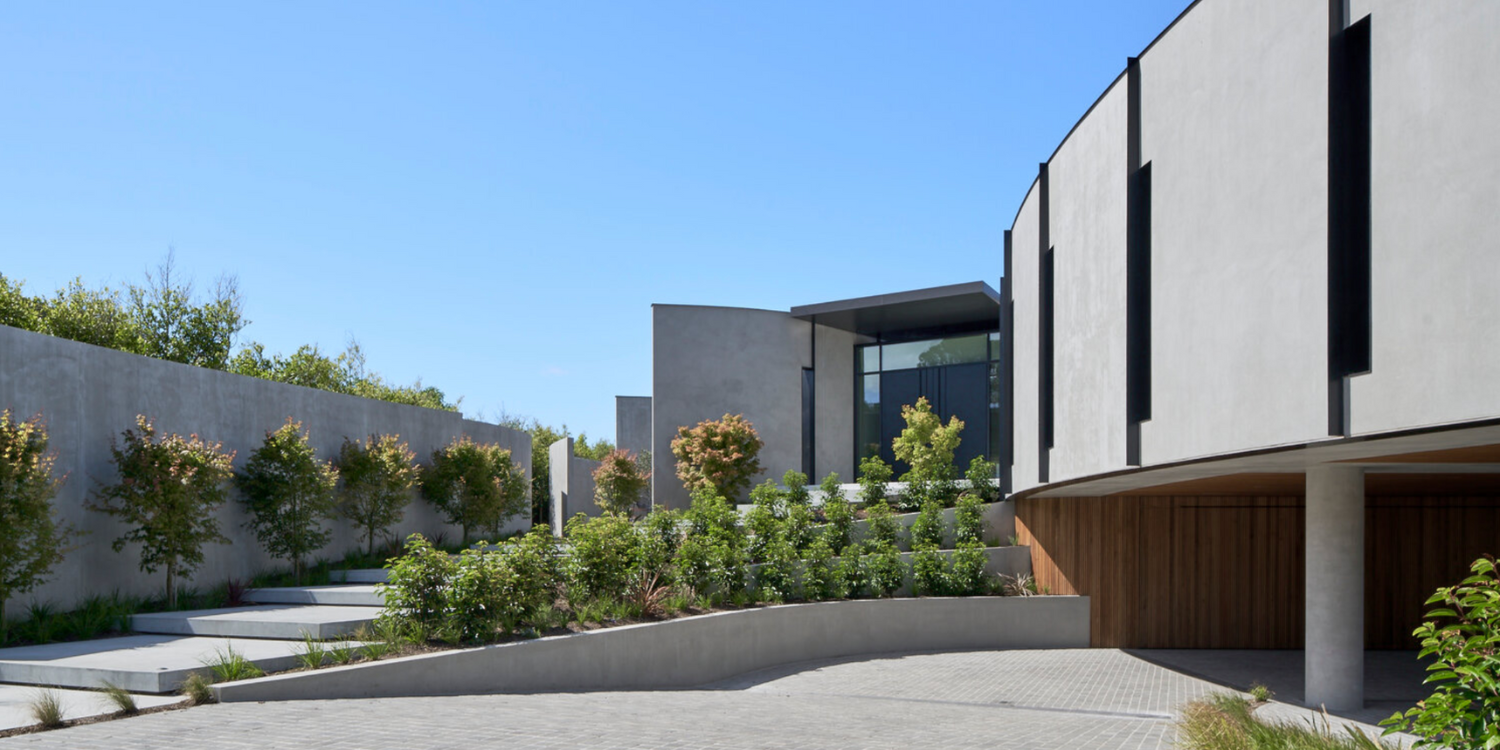
Horizon House, Flinders
Horizon House in Flinders blends nature with bold architectural design, using natural elements to enhance its modern aesthetic.Acer Palmatum (Japan...
